-
 Bitcoin
Bitcoin $118300
1.01% -
 Ethereum
Ethereum $4215
0.69% -
 XRP
XRP $3.198
-3.83% -
 Tether USDt
Tether USDt $1.000
-0.01% -
 BNB
BNB $803.4
-0.53% -
 Solana
Solana $180.3
-0.67% -
 USDC
USDC $0.9998
-0.01% -
 Dogecoin
Dogecoin $0.2334
-1.49% -
 TRON
TRON $0.3394
0.86% -
 Cardano
Cardano $0.7980
-1.45% -
 Chainlink
Chainlink $22.19
6.65% -
 Hyperliquid
Hyperliquid $43.41
0.13% -
 Stellar
Stellar $0.4407
-3.13% -
 Sui
Sui $3.843
-2.24% -
 Bitcoin Cash
Bitcoin Cash $564.7
-3.74% -
 Hedera
Hedera $0.2588
-3.41% -
 Ethena USDe
Ethena USDe $1.001
0.00% -
 Avalanche
Avalanche $23.64
-3.37% -
 Litecoin
Litecoin $120.0
-4.01% -
 Toncoin
Toncoin $3.342
-1.11% -
 UNUS SED LEO
UNUS SED LEO $9.038
0.60% -
 Shiba Inu
Shiba Inu $0.00001347
-0.81% -
 Uniswap
Uniswap $10.69
-4.58% -
 Polkadot
Polkadot $4.034
-1.30% -
 Dai
Dai $1.000
0.01% -
 Bitget Token
Bitget Token $4.472
-1.52% -
 Cronos
Cronos $0.1571
-3.04% -
 Pepe
Pepe $0.00001207
-2.21% -
 Monero
Monero $273.8
-3.19% -
 Ethena
Ethena $0.7520
2.75%
What is proof-of-work in the context of Bitcoin?
Bitcoin's proof-of-work secures the network by requiring miners to solve complex cryptographic puzzles, ensuring decentralization and resistance to tampering.
Aug 10, 2025 at 01:28 pm

Understanding the Concept of Proof-of-Work
Proof-of-work (PoW) is a consensus mechanism used by the Bitcoin network to validate transactions and secure the blockchain. It ensures that all participants in the decentralized network agree on the state of the ledger without relying on a central authority. In PoW, miners compete to solve a complex cryptographic puzzle, and the first one to find the solution gets the right to add a new block of transactions to the blockchain. This process requires substantial computational effort, making it costly and time-consuming to alter any part of the chain once recorded.
The core idea behind proof-of-work is to create a system where creating a new block demands real-world resources—specifically electricity and processing power. This deters malicious actors because attempting to manipulate the blockchain would require an attacker to control more than 50% of the network’s total computing power, a scenario known as a 51% attack. The economic cost of such an attack makes it highly impractical.
How Miners Participate in Proof-of-Work
Miners play a crucial role in the Bitcoin proof-of-work system. Their primary task is to collect pending transactions from the mempool, verify their legitimacy, and bundle them into a candidate block. Once this is done, they begin the process of finding a valid hash for the block header that meets the current difficulty target.
- Gather unconfirmed transactions and validate digital signatures
- Construct a block header containing the previous block hash, Merkle root, timestamp, nonce, and version number
- Perform repeated hashing using the SHA-256 algorithm by incrementing the nonce value
- Continue until a hash is produced that is numerically less than the network’s difficulty target
The first miner to discover such a hash broadcasts the block to the network. Other nodes verify the solution and, if valid, append the block to their copy of the blockchain. The successful miner receives a block reward in newly minted bitcoins plus transaction fees.
The Role of Difficulty Adjustment
To maintain a consistent block creation rate of approximately one block every 10 minutes, the Bitcoin network adjusts the mining difficulty every 2016 blocks—roughly every two weeks. This adjustment is based on how quickly the previous 2016 blocks were mined compared to the expected time.
- If blocks were mined faster than 10 minutes on average, the difficulty increases
- If blocks took longer than 10 minutes, the difficulty decreases
- The adjustment ensures network stability despite fluctuations in total hash power
This mechanism allows Bitcoin to remain functional and predictable even as more miners join or leave the network. The difficulty target is encoded in the block header and must be recalculated by all nodes during each adjustment period to ensure consensus.
Security Implications of Proof-of-Work
The security of Bitcoin is fundamentally tied to the energy and computational resources invested in proof-of-work. Because altering a past block would require re-mining that block and all subsequent blocks, the further back a block is in the chain, the more computationally expensive it becomes to change.
- Each new block adds another layer of cryptographic commitment
- Reorganizing the blockchain requires redoing all the proof-of-work for affected blocks
- The network automatically rejects chains with less accumulated work
This makes Bitcoin highly resistant to tampering. Additionally, the transparency of the blockchain allows every participant to independently verify the validity of every transaction and block, reinforcing trust in the system without requiring intermediaries.
Energy Consumption and Environmental Considerations
One of the most discussed aspects of proof-of-work in Bitcoin is its high energy consumption. Mining operations require powerful hardware such as ASICs (Application-Specific Integrated Circuits), which consume large amounts of electricity. Critics argue that this energy usage is environmentally unsustainable.
However, many mining operations are increasingly located in regions with surplus renewable energy, such as hydroelectric power in parts of Scandinavia and Sichuan, China. Some miners utilize flared natural gas that would otherwise be wasted, converting it into electricity for mining. While the energy footprint remains significant, the industry is evolving to incorporate more sustainable practices.
The economic incentives of mining also encourage efficiency. Miners constantly seek lower electricity costs and more efficient hardware to maximize profits, which drives innovation in energy-efficient computing technologies.
Comparison with Alternative Consensus Mechanisms
While proof-of-work is the original consensus algorithm used by Bitcoin, other cryptocurrencies have adopted different models such as proof-of-stake (PoS). In PoS, validators are chosen based on the amount of cryptocurrency they hold and are willing to "stake" as collateral, rather than computational work.
- PoW relies on external resource expenditure (electricity and hardware)
- PoS relies on internal economic incentives (staked coins)
- PoW is considered more decentralized due to lower barriers to entry in theory
Bitcoin’s design prioritizes security and decentralization over energy efficiency. The immutability and resilience provided by proof-of-work are central to Bitcoin’s value proposition as digital gold and a censorship-resistant monetary system.
Frequently Asked Questions
What prevents miners from cheating in the proof-of-work system?
Miners cannot cheat because every node in the network independently verifies the validity of blocks and their proof-of-work. A block with an invalid transaction or an incorrect hash is immediately rejected. The cost of producing a fraudulent block—both in electricity and lost opportunity—is too high to justify such attempts.
How is the nonce used in Bitcoin mining?
The nonce is a 32-bit field in the block header that miners change repeatedly to produce different hash outputs. Since SHA-256 is deterministic, changing the nonce alters the input, resulting in a completely different hash. Miners cycle through billions of nonce values per second until they find one that produces a hash below the difficulty target.
Can anyone become a Bitcoin miner?
Yes, in principle, anyone can participate in mining. However, due to the high difficulty and competition, individual miners using standard computers are unlikely to succeed. Most mining is now conducted by large-scale operations using specialized ASIC hardware and access to cheap electricity. Individuals can join mining pools to combine hash power and share rewards proportionally.
Why does Bitcoin use SHA-256 instead of another hashing algorithm?
SHA-256 was chosen for its strong cryptographic properties, including resistance to collision and preimage attacks. It is also deterministic, fast to compute for valid inputs, and slow to reverse-engineer—ideal for proof-of-work. Its widespread use and scrutiny by the cryptographic community add to its reliability and trustworthiness in the Bitcoin protocol.
Disclaimer:info@kdj.com
The information provided is not trading advice. kdj.com does not assume any responsibility for any investments made based on the information provided in this article. Cryptocurrencies are highly volatile and it is highly recommended that you invest with caution after thorough research!
If you believe that the content used on this website infringes your copyright, please contact us immediately (info@kdj.com) and we will delete it promptly.
- Bitcoin's Performance and Scalability: Can Layer-2 Solutions Keep Up?
- 2025-08-11 00:30:14
- Nexchain, WeWake, and the 2025 Crypto Presale Buzz: What's the Deal?
- 2025-08-11 00:30:14
- Altcoin Dominance, Bull Run, and Blockchain Forecasts: Is AVAX the Sleeper?
- 2025-08-10 22:30:14
- Pi Coin: Crypto Disappointment or Opportunity to Recoup Losses?
- 2025-08-10 22:30:14
- Crypto Presales: Unlocking Generational Wealth with the Best Coins in 2025
- 2025-08-10 22:50:14
- PEPE, Unilabs, and Fundraising: Crypto's Dynamic Duo?
- 2025-08-10 22:55:21
Related knowledge
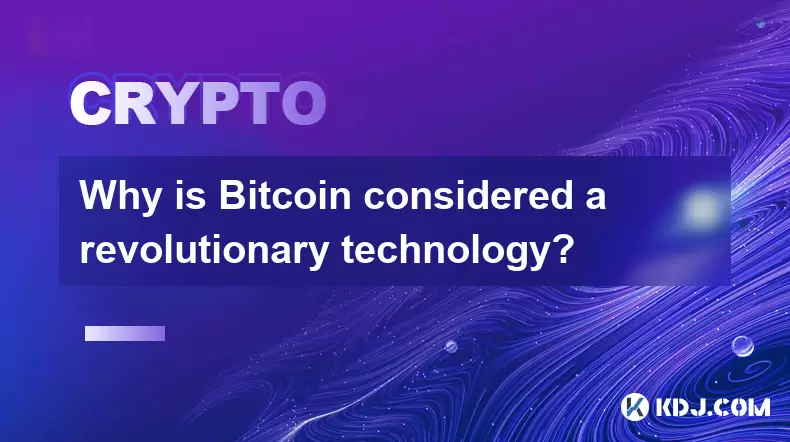
Why is Bitcoin considered a revolutionary technology?
Aug 10,2025 at 07:42pm
Decentralized Architecture and Trustless TransactionsBitcoin is considered revolutionary because it introduced a decentralized architecture that opera...
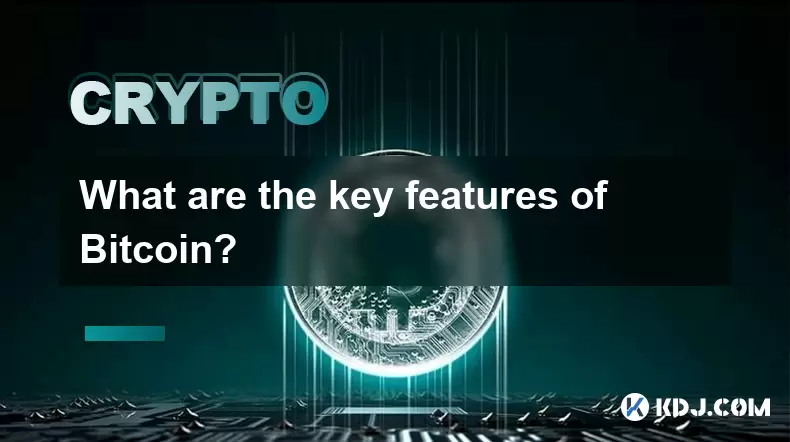
What are the key features of Bitcoin?
Aug 10,2025 at 02:50am
Decentralization and Peer-to-Peer NetworkOne of the most defining characteristics of Bitcoin is its decentralized nature. Unlike traditional financial...

Can the Bitcoin protocol be changed?
Aug 07,2025 at 01:16pm
Understanding the Bitcoin ProtocolThe Bitcoin protocol is the foundational set of rules that govern how the Bitcoin network operates. It defines every...
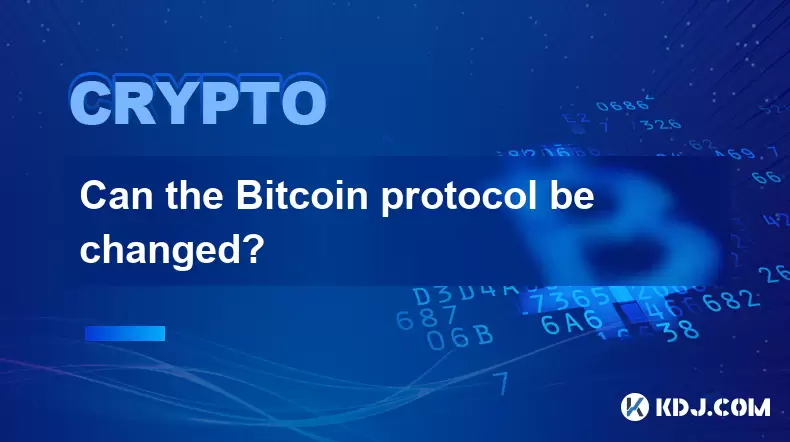
Can the Bitcoin protocol be changed?
Aug 11,2025 at 01:01am
Understanding the Bitcoin Protocol StructureThe Bitcoin protocol is the foundational set of rules that govern how the Bitcoin network operates. These ...
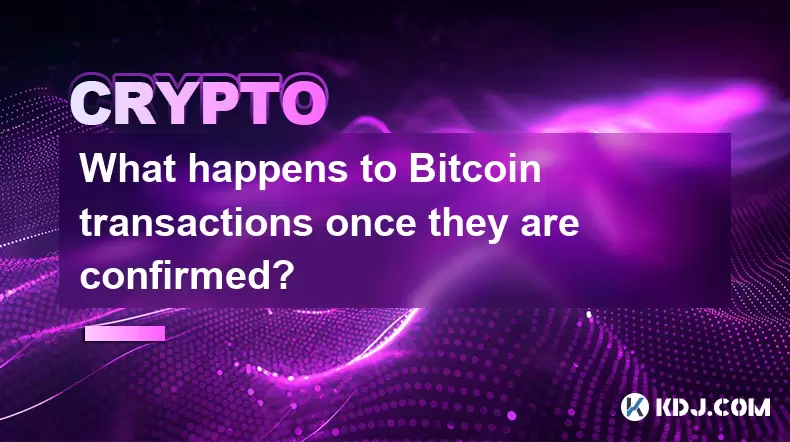
What happens to Bitcoin transactions once they are confirmed?
Aug 09,2025 at 05:22am
Understanding Bitcoin Transaction ConfirmationWhen a Bitcoin transaction is initiated, it is broadcast to the network and placed in a pool of unconfir...
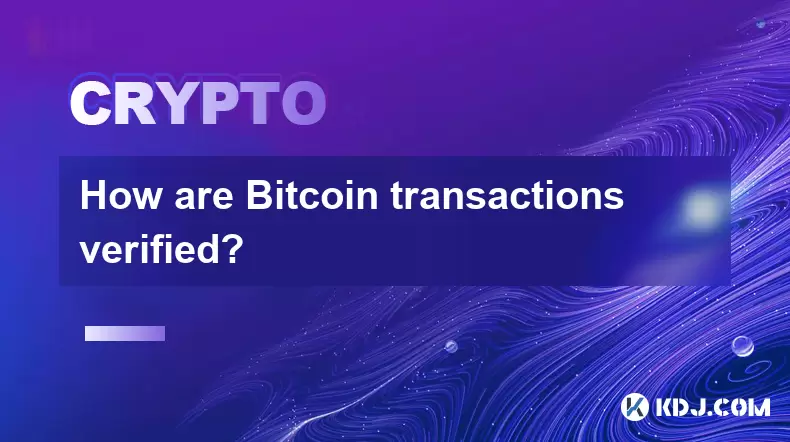
How are Bitcoin transactions verified?
Aug 08,2025 at 06:57am
Understanding Bitcoin Transaction VerificationBitcoin transactions are verified through a decentralized network of nodes and miners that ensure the le...

Why is Bitcoin considered a revolutionary technology?
Aug 10,2025 at 07:42pm
Decentralized Architecture and Trustless TransactionsBitcoin is considered revolutionary because it introduced a decentralized architecture that opera...

What are the key features of Bitcoin?
Aug 10,2025 at 02:50am
Decentralization and Peer-to-Peer NetworkOne of the most defining characteristics of Bitcoin is its decentralized nature. Unlike traditional financial...

Can the Bitcoin protocol be changed?
Aug 07,2025 at 01:16pm
Understanding the Bitcoin ProtocolThe Bitcoin protocol is the foundational set of rules that govern how the Bitcoin network operates. It defines every...

Can the Bitcoin protocol be changed?
Aug 11,2025 at 01:01am
Understanding the Bitcoin Protocol StructureThe Bitcoin protocol is the foundational set of rules that govern how the Bitcoin network operates. These ...

What happens to Bitcoin transactions once they are confirmed?
Aug 09,2025 at 05:22am
Understanding Bitcoin Transaction ConfirmationWhen a Bitcoin transaction is initiated, it is broadcast to the network and placed in a pool of unconfir...

How are Bitcoin transactions verified?
Aug 08,2025 at 06:57am
Understanding Bitcoin Transaction VerificationBitcoin transactions are verified through a decentralized network of nodes and miners that ensure the le...
See all articles

























































































